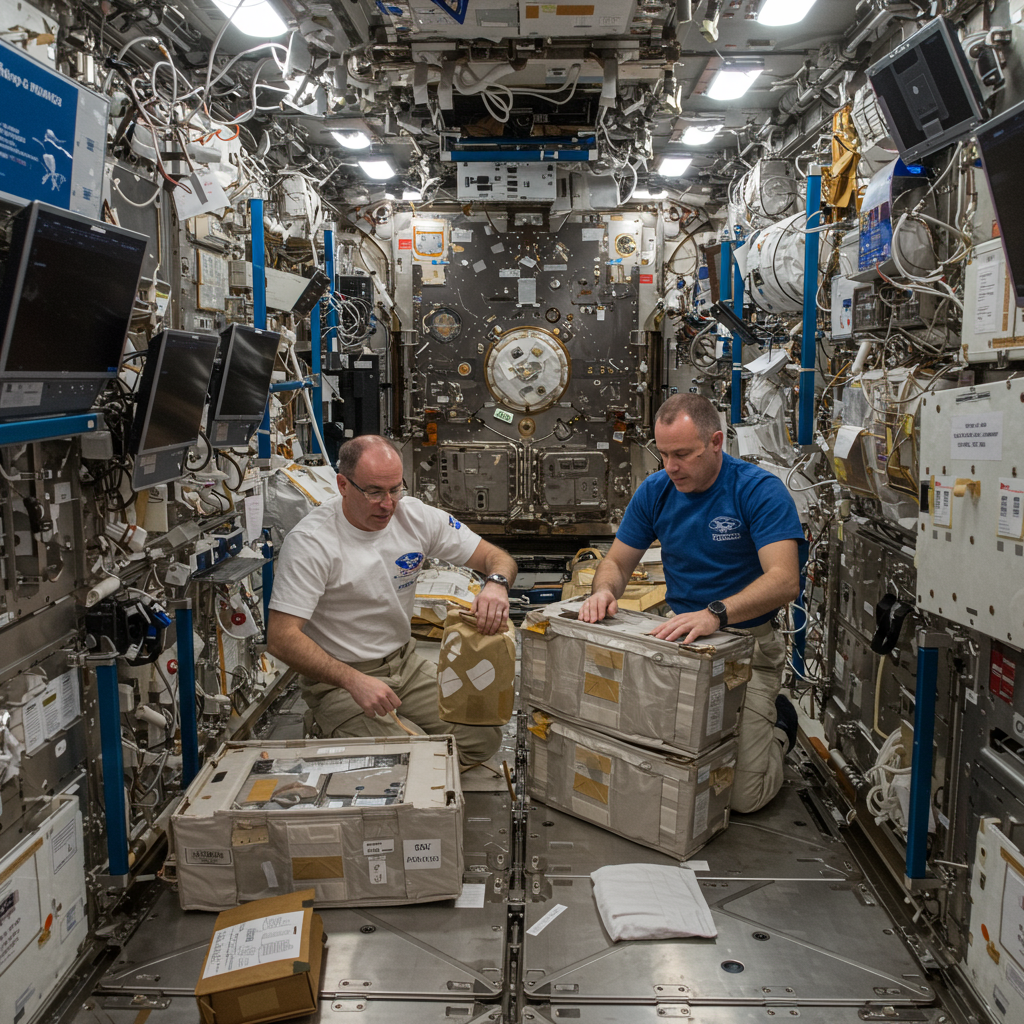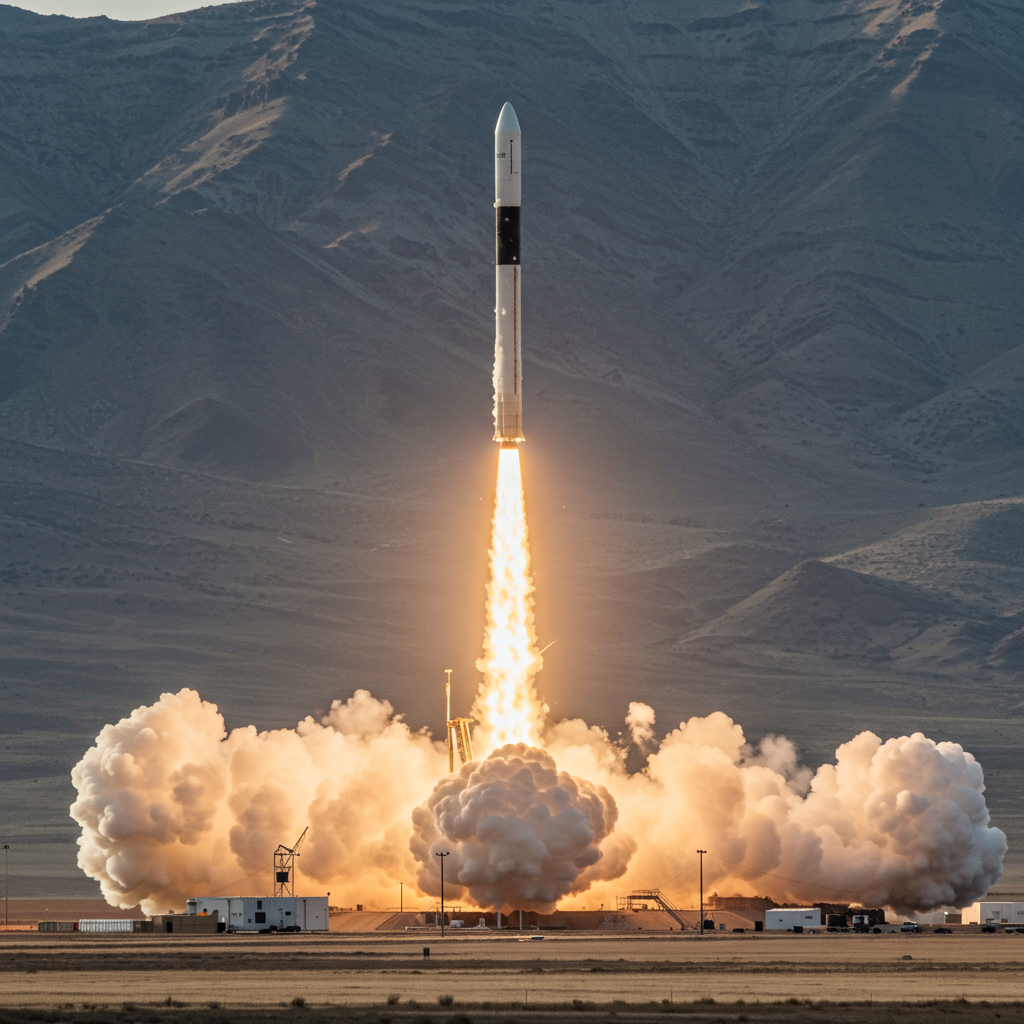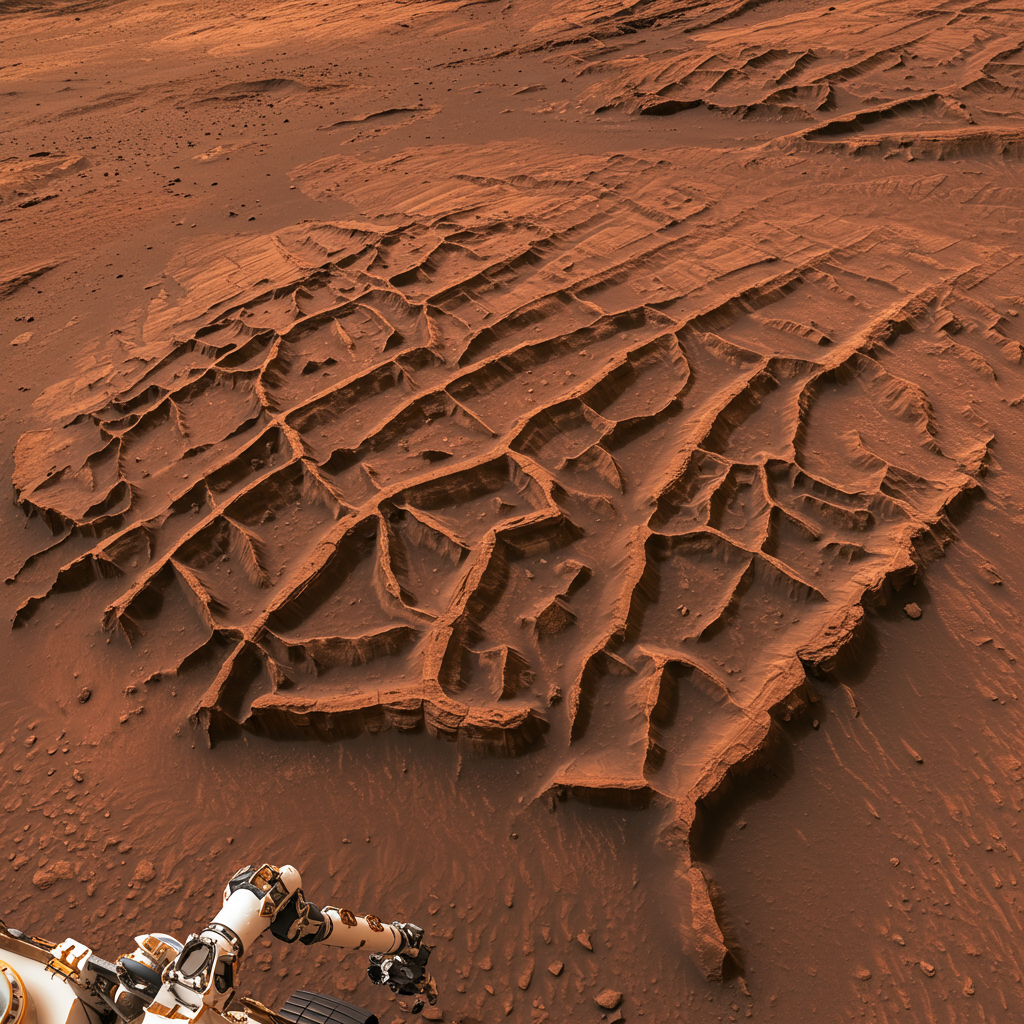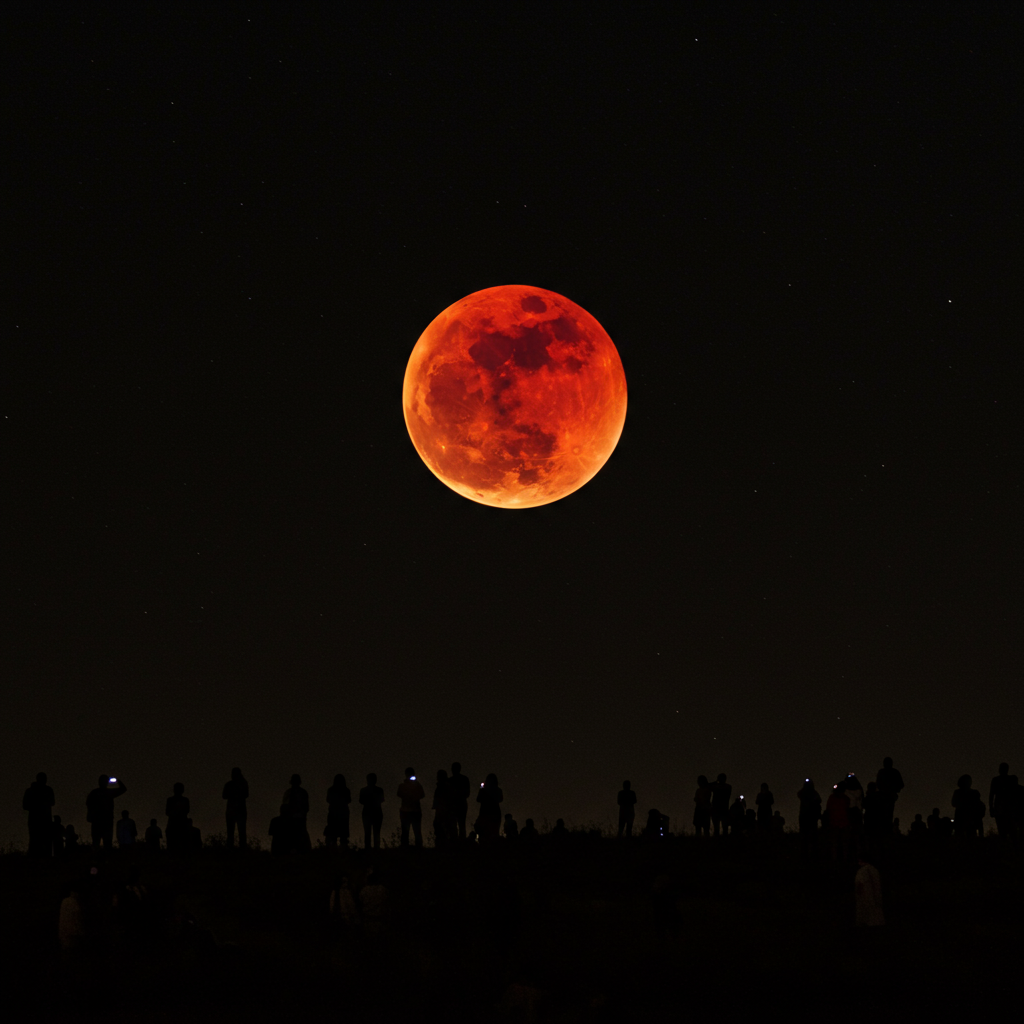The International Space Station (ISS) recently buzzed with excitement as it welcomed Northrop Grumman’s first-ever “extra-large” Cygnus cargo spacecraft. Named the S.S. William C. “Willie” McCool, this ISS Cygnus XL Resupply Mission marked a crucial moment for the orbital outpost. Astronauts eagerly unpacked over 11,000 pounds of vital supplies, cutting-edge scientific experiments, and, perhaps most anticipated, deeply personal care packages from home. From September 15-19, 2025, the Expedition 73 crew experienced the invaluable blend of logistical support and morale boost that these resupply missions consistently provide. This advanced Cygnus XL, larger and more capable than its predecessors, promises a new era of space logistics, ensuring the continued success of human endeavors beyond Earth.
A Delayed but Triumphant Arrival
The journey for the S.S. William C. “Willie” McCool began on Sunday, September 14, launching aboard a SpaceX Falcon 9 rocket from Cape Canaveral. Its rendezvous with the ISS, originally planned for September 17, experienced a slight delay. The uncrewed spacecraft encountered an engine issue. This involved premature shutdowns during two critical engine burns. These burns were designed to raise its orbit for the delicate approach.
Engineers quickly identified the cause: an “overly conservative safeguard” in the software settings. This early warning system triggered shutdowns despite the spacecraft operating normally. After swift resolution, NASA confirmed the issue was fixed. The Northrop Grumman Cygnus then proceeded with its revised schedule.
On September 18, 2025, NASA astronauts Jonny Kim and Zena Cardman expertly managed the capture. They used the station’s Canadarm2 robotic arm as the ISS orbited 260 miles above the Democratic Republic of Congo. Ground controllers then guided the spacecraft to its berthing port on the Unity node. This successful, albeit delayed, arrival brought significant relief and excitement to the crew. It also honored the legacy of Space Shuttle Columbia pilot William “Willie” McCool, whose life continues to inspire those in space.
The “XL” Advantage: Boosting ISS Capacity
This particular ISS Cygnus XL Resupply Mission represents a significant upgrade. The “XL” designation signifies a substantial increase in cargo capacity. Northrop Grumman lengthened the vessel by 1.6 meters (5 feet). This enhancement allows it to carry approximately 2,600 additional pounds per flight. The S.S. William C. “Willie” McCool delivered roughly 11,000 pounds (4,990 kilograms) of cargo. This is a notable leap from the 8,500 pounds carried on earlier Cygnus models.
NASA collaborated closely with Northrop Grumman on this crucial update. The increased capacity is “incredibly beneficial,” according to NASA’s Dina Contella. It helps the station “stock up on these items” like spare parts and consumables. These include nitrogen, oxygen, food, and even toilet components. The station had faced shortages over the past year. This larger Cygnus aims to build a robust reserve for future operations.
This mission also broke a longer-than-usual gap in Cygnus deliveries. The preceding mission, NG-21, arrived in August 2024. The NG-22 mission was unfortunately canceled. That spacecraft sustained damage during transport to its launch site. This temporary use of SpaceX Falcon 9 rockets for Cygnus launches highlights the dynamic nature of space logistics. It underscores NASA’s commitment to diverse commercial resupply partnerships.
More Than Just Cargo: A Taste of Home in Space
Beyond the essential spare parts and scientific instruments, the ISS Cygnus XL Resupply Mission carried something equally vital: morale-boosting care packages. NASA astronaut Jonny Kim captured the sentiment on social media. He declared these personal deliveries the “best part” of cargo dockings. He also expressed gratitude to NASA for packaging them “with love.”
The treats onboard were diverse and thoughtfully chosen. Jonny Kim himself received kimchi and Korean BBQ pork. Mike Fincke delighted in gummy bears and Mike & Ike candies. Zena Cardman and Kimiya Yui found Reese’s Peanut Butter Cups and Hershey candies. Other mentions included Swedish Fish and beef jerky. These small comforts from Earth play a huge role. They remind astronauts of home. They also provide a much-needed break from the monotony of space food. It’s a testament to the human element embedded in every complex space mission.
Expedition 73: Pioneering Scientific Research
The arrival of the Cygnus XL wasn’t the only highlight for the Expedition 73 crew during this busy week of September 15-19, 2025. Comprised of Commander Sergey Ryzhikov (Roscosmos), flight engineers Alexey Zubritsky, Oleg Platonov (Roscosmos), Jonny Kim, Zena Cardman, Mike Fincke (NASA), and Kimiya Yui (JAXA), the crew was deeply immersed in groundbreaking microgravity research. Their work spans various fields, from human health to materials science, promising significant breakthroughs both in space and on Earth.
Key experiments conducted included:
MVP Cell-07 and Multi-use Variable-g Platform: NASA astronaut Jonny Kim and JAXA astronaut Kimiya Yui studied bioprinted liver tissues. They observed how blood vessels in these tissues responded to microgravity. This research is crucial for manufacturing high-quality vascularized tissues and organs. It could improve long-term astronaut health. It also offers potential life-changing benefits for patients on Earth.
Microgravity Associated Bone Loss-B: NASA astronaut Zena Cardman prepared bone stem cell samples. These will be stored and returned to Earth for further analysis. This study aims to protect astronauts’ skeletal systems. It could also lead to new treatments for age-related conditions and bone diseases on Earth.
BioNutrients-3: NASA astronaut Mike Fincke continued a study focused on producing essential vitamins and nutrients. He used yeast, yogurt, and fermented milk samples. This research is vital for supporting future long-duration space missions. It ensures astronauts have access to fresh nutrients.
Plasma Kristall-4: Roscosmos cosmonaut Oleg Platonov prepared hardware. This equipment observes complex plasmas. He also photographed glaciers and mountains in South America and Africa. These images document natural and human-made conditions on Earth.
The Cygnus XL also delivered new scientific cargo. This included materials for producing semiconductor crystals in space. It brought equipment to improve cryogenic fuel tanks. A specialized UV light system arrived. This system prevents microbial communities in water systems. Supplies for producing pharmaceutical crystals were also included. These crystals could potentially lead to new treatments for cancer and other diseases.
Life Aboard the ISS: Interviews and Milestones
Amidst the intense scientific work and cargo operations, the Expedition 73 crew also engaged in outreach. NASA astronauts Jonny Kim and Zena Cardman participated in an interview. They connected with attendees of the Fast Company Innovation Festival in New York. Cardman described her presence on the station as a “dream come true.” She highlighted the years of preparation and collective effort involved. She also cherished the “extra-special treat” of being in space with a classmate, referring to Kim.
This period also marked a significant milestone for the station. As of Friday, September 19, the ISS had been continuously crewed for 24 years, 10 months, and 17 days. This demonstrates the enduring success of international collaboration in space. Besides the new Cygnus XL, the station was hosting several other docked spacecraft. These included SpaceX’s Dragon “Endeavour” and CRS-33 Dragon. Roscosmos’ Soyuz MS-27 and Progress MS-31 and M-32 were also present.
The Progress M-32 (93P) resupply ship also arrived recently. Cosmonauts Sergey Ryzhikov and Alexey Zubritsky handled its unloading. They also managed fluid transfer from the Russian vessel. This continuous flow of supplies and research opportunities underscores the International Space Station cargo network’s complexity and importance.
The Future of Space Logistics and Discovery
The successful ISS Cygnus XL Resupply Mission is a testament to the robust and evolving ecosystem of commercial spaceflight. Northrop Grumman’s enhanced Cygnus XL, the S.S. William C. “Willie” McCool, is expected to remain berthed at the ISS until March 2026. After its mission, it will depart the station. It will then deorbit and safely burn up upon re-entry into Earth’s atmosphere.
NASA’s partnerships with commercial entities like Northrop Grumman and SpaceX are vital. They ensure the ISS remains well-stocked and operational. Russia also regularly sends supplies, and Japan is preparing to resume its delivery services. This global effort guarantees the orbital laboratory continues to be a beacon of human spaceflight innovation. It supports groundbreaking research that benefits all humankind. The blend of cutting-edge technology, scientific ambition, and human connection defines every aspect of life on the ISS.
Frequently Asked Questions
What was the significance of the recent Cygnus XL resupply mission to the ISS?
The recent ISS Cygnus XL Resupply Mission, involving the S.S. William C. “Willie” McCool, was highly significant for several reasons. It was the inaugural flight of Northrop Grumman’s “extra-large” Cygnus, which can carry substantially more cargo (11,000 pounds) than previous models due to an extended design. This increased capacity is crucial for stocking up essential supplies and spare parts on the ISS. The mission also delivered a diverse array of scientific experiments and, importantly, morale-boosting care packages from home for the Expedition 73 crew, highlighting the dual role of these missions in sustaining life and work in space.
What scientific research is Expedition 73 conducting on the ISS?
Expedition 73, during the week of September 15-19, 2025, engaged in various groundbreaking microgravity research endeavors. Key projects included MVP Cell-07, studying bioprinted liver tissues for organ development and astronaut health, and Microgravity Associated Bone Loss-B, examining bone stem cells to combat bone density loss in space and on Earth. Astronauts also worked on BioNutrients-3, focusing on producing essential vitamins from fermented samples for long-duration missions, and Plasma Kristall-4, observing complex plasmas while documenting Earth’s geographical features. The mission also brought new equipment for semiconductor crystals, cryogenic fuel tanks, and pharmaceutical crystal production.
Why was the Cygnus XL’s arrival delayed, and what makes this new version “extra-large”?
The Cygnus XL’s arrival was delayed by one day due to premature engine shutdowns during critical orbital maneuvers. Engineers identified the cause as an “overly conservative safeguard” in the spacecraft’s software, which triggered an early warning system. The issue was quickly resolved. The new version is “extra-large” because Northrop Grumman extended the spacecraft by 1.6 meters (5 feet). This enhancement allows it to carry approximately 2,600 additional pounds of cargo per flight, increasing its total capacity to about 11,000 pounds. This significant upgrade, known as the Northrop Grumman Cygnus XL, provides crucial logistical advantages for maintaining the International Space Station.




